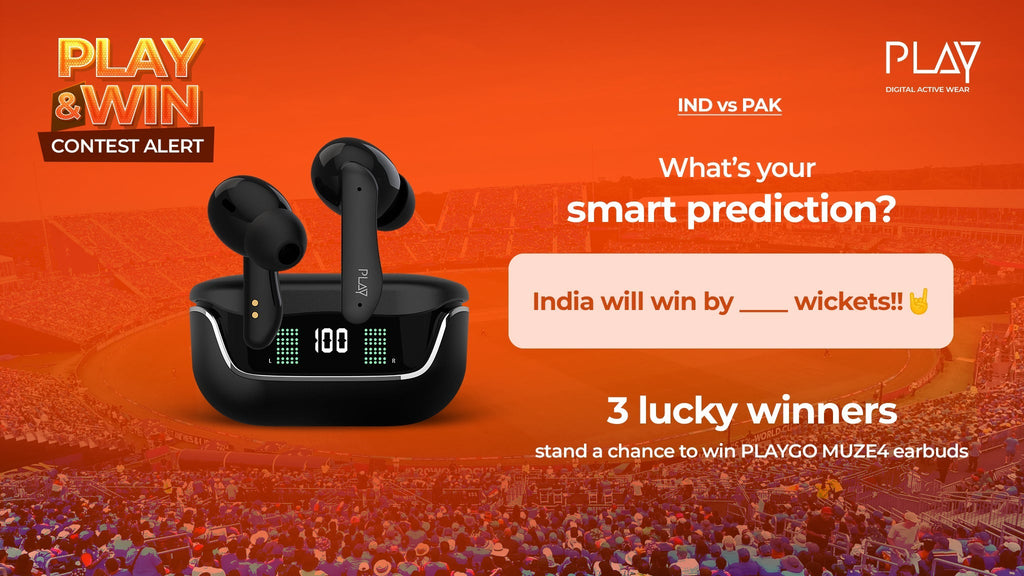

How to Fix Bluetooth Headphone Sound Delay
You could be enjoying a music video on YouTube. However, you observed something wasn't quite right. The sound is out of rhythm with the movements in the video Before you get too worked up, let's go into the reasons for this and show you how to fix sound delay on Bluetooth headphones in this article. To understand what causes Bluetooth sound delay and how to solve it, you must first understand what audio latency is.
The time taken for audio data to get from its origin (computer, smartphone, mp3 player) to your headphones or speakers is known as audio latency. These are the milliseconds (ms) required to convert digital data into an audio signal that can be sent to your headphones over a cable or wireless connection.
The average audio lag over a cable connection is 5-10 milliseconds. Bluetooth latency can range from an ideal 34 milliseconds (aptX LL) to 100-300 milliseconds for true wireless earbuds and headsets in a wireless network.
To offer you a quick overview, a Bluetooth audio chain consists of a transmitter and a receiver. The audio signal is sent from the transmitter to the receiver. This audio transmission travels from transmitter to the receiver using a specific bandwidth. The more bandwidth is required to get an audio signal to the receiver, the larger the file size of the audio signal (better quality equals to larger audio files).
Consider bandwidth to be the width of the road, and audio file size to be the volume of traffic. Traffic jams will occur if the volume of traffic exceeds the capacity of the road, slowing progress to a crawl hence more time required to complete the transmission. When there isn't enough connectivity to support a particularly large audio file transmission (for example, if you're listening to a lossless audio file), the transfer will be slow and lag.
While wired connections provide greater audio latency, utilising Bluetooth headphones doesn't really guarantee that you will experience detectable sound delay all of the time. As you'll see in a moment, various factors come into play when determining whether you'll have near-inaudible audio latency or a detectable delay.
Factors that Influence Bluetooth Audio Quality
When utilising Bluetooth headphones, there are four crucial factors that will influence your listening experience:
Bluetooth Codecs
It decreases the file size of the audio data (so that it doesn't consume too much bandwidth) and encodes it in a specific format for transmission during the compression stage. The compressed data is then decoded so that it can be transformed into an audio signal that we can listen to.There are a variety of Bluetooth audio codecs, each with its own method for reducing and delivering audio data.
The main thing to note is that some codecs are stronger than others for streaming music over Bluetooth, so those are the ones you want your source and Bluetooth headphones to support for a better listening session. But, you should be aware that the Bluetooth codec of your headsets must match the audio source's codec. They will just fallback to the lowest audio codec if this is not the case.
Interference
Unwanted frequency signals intercept and interrupt the clean connection between your source and Bluetooth headphones, which is referred to as interference. Your wireless mouse, WiFi connection, television, and other similar appliances and gadgets that generate some form of radio frequency may interfere with the signal flow to your Bluetooth device.
The distance between the source and receiver
There's a limit to how far you can travel away from the audio source before losing connection and experiencing a drop in your listening experience. And it's not just about the range of your headphones. While most Bluetooth headphones can now reach as far as 10 metres on average, walls and other physical obstructions can hinder you from using the headphones to their full potential. Try bringing the headphones and audio source closer together to see if anything happens.
Bluetooth Version
Not all Bluetooth versions are made equal, just like Bluetooth audio codecs. Bluetooth's technology has advanced significantly over time. Bluetooth 5.0, the most recent standard, can process audio data quicker than prior versions, resulting in lower latency times and improved sound quality.
In a wireless connection, there'll always be audio delay. However, there are methods to reduce it so that it isn't as obvious. Encoding, sending, and decoding audio data over a wireless connection will always take longer than over a cable connection.
The time taken for audio data to get from its origin (computer, smartphone, mp3 player) to your headphones or speakers is known as audio latency. These are the milliseconds (ms) required to convert digital data into an audio signal that can be sent to your headphones over a cable or wireless connection.
The average audio lag over a cable connection is 5-10 milliseconds. Bluetooth latency can range from an ideal 34 milliseconds (aptX LL) to 100-300 milliseconds for true wireless earbuds and headsets in a wireless network.
To offer you a quick overview, a Bluetooth audio chain consists of a transmitter and a receiver. The audio signal is sent from the transmitter to the receiver. This audio transmission travels from transmitter to the receiver using a specific bandwidth. The more bandwidth is required to get an audio signal to the receiver, the larger the file size of the audio signal (better quality equals to larger audio files).
Consider bandwidth to be the width of the road, and audio file size to be the volume of traffic. Traffic jams will occur if the volume of traffic exceeds the capacity of the road, slowing progress to a crawl hence more time required to complete the transmission. When there isn't enough connectivity to support a particularly large audio file transmission (for example, if you're listening to a lossless audio file), the transfer will be slow and lag.
While wired connections provide greater audio latency, utilising Bluetooth headphones doesn't really guarantee that you will experience detectable sound delay all of the time. As you'll see in a moment, various factors come into play when determining whether you'll have near-inaudible audio latency or a detectable delay.
Factors that Influence Bluetooth Audio Quality
When utilising Bluetooth headphones, there are four crucial factors that will influence your listening experience:
Bluetooth Codecs
It decreases the file size of the audio data (so that it doesn't consume too much bandwidth) and encodes it in a specific format for transmission during the compression stage. The compressed data is then decoded so that it can be transformed into an audio signal that we can listen to.There are a variety of Bluetooth audio codecs, each with its own method for reducing and delivering audio data.
The main thing to note is that some codecs are stronger than others for streaming music over Bluetooth, so those are the ones you want your source and Bluetooth headphones to support for a better listening session. But, you should be aware that the Bluetooth codec of your headsets must match the audio source's codec. They will just fallback to the lowest audio codec if this is not the case.
Interference
Unwanted frequency signals intercept and interrupt the clean connection between your source and Bluetooth headphones, which is referred to as interference. Your wireless mouse, WiFi connection, television, and other similar appliances and gadgets that generate some form of radio frequency may interfere with the signal flow to your Bluetooth device.
The distance between the source and receiver
There's a limit to how far you can travel away from the audio source before losing connection and experiencing a drop in your listening experience. And it's not just about the range of your headphones. While most Bluetooth headphones can now reach as far as 10 metres on average, walls and other physical obstructions can hinder you from using the headphones to their full potential. Try bringing the headphones and audio source closer together to see if anything happens.
Bluetooth Version
Not all Bluetooth versions are made equal, just like Bluetooth audio codecs. Bluetooth's technology has advanced significantly over time. Bluetooth 5.0, the most recent standard, can process audio data quicker than prior versions, resulting in lower latency times and improved sound quality.
In a wireless connection, there'll always be audio delay. However, there are methods to reduce it so that it isn't as obvious. Encoding, sending, and decoding audio data over a wireless connection will always take longer than over a cable connection.


